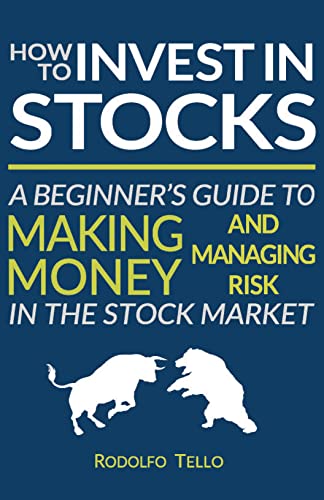I still remember the first time I considered investing in stocks. The thought of potentially growing my wealth was both exciting and intimidating. Like many beginners, I had a lot of questions and concerns. How do I even start? Can I really make money in the stock market? Thankfully, I took the plunge, educated myself, and learned the ropes. Now, I want to share my knowledge with you. In this beginner’s guide to investing in stocks, I will provide you with a clear roadmap to navigate this fascinating world.
1. Understand the Basics:
Before diving into the stock market, it’s crucial to understand some basic concepts. Stocks represent ownership in a company, and when you buy a share, you become a partial owner. The value of stocks fluctuates based on various factors like company performance, market conditions, and investor sentiment. Some companies may also pay dividends, which are a portion of their profits distributed to shareholders. Remember, investing in stocks involves both rewards and risks, so it’s vital to be informed and make informed decisions.
2. Set Clear Financial Goals:
Before investing, take a moment to identify your financial goals. Are you aiming for long-term wealth accumulation or planning for a specific milestone like buying a house or funding your child’s education? Knowing your goals will help determine your investing strategy, time horizon, and risk tolerance. It’s important to differentiate between short-term and long-term investments, as the strategies and risks associated with each may differ.
3. Determine Your Risk Tolerance:
Investing in stocks inherently carries some level of risk. Understanding your risk tolerance will help you choose the appropriate investments. If you are comfortable with more risk and have a longer time horizon, you may consider investing in growth stocks or emerging markets. Conversely, if you prefer more stability, you might opt for blue-chip stocks or dividend-paying companies. Evaluating your risk tolerance is crucial to avoid undue stress or impulsive decision-making during market fluctuations.
4. Educate Yourself:
Knowledge is power when it comes to investing. Take the time to educate yourself about different investment strategies, financial statements, market trends, and economic indicators. Read books, watch informative videos, follow financial news, and explore credible online resources. While there is no guarantee in the stock market, understanding the fundamentals will equip you with the tools to make informed investment decisions and minimize the likelihood of mistakes.
5. Diversify Your Portfolio:
“Don’t put all your eggs in one basket” is a popular adage in investing. Diversification is key to managing risk. By spreading your investments across different stocks, industries, and asset classes, you reduce the impact of any single investment’s performance on your overall portfolio. Diversification helps protect against substantial losses while increasing the potential for long-term growth. Consider investing in different sectors, sizes of companies, and even internationally to achieve a well-rounded portfolio.
6. Start with Index Funds or ETFs:
If you are just starting out and feel overwhelmed by the idea of choosing individual stocks, consider investing in index funds or exchange-traded funds (ETFs). These funds track a specific market index, such as the S&P 500, and provide instant diversification. Index funds and ETFs are typically low-cost, making them an excellent option for beginners. They allow you to gain exposure to a broad range of companies without having to pick individual stocks.
7. Practice Patience and Long-Term Thinking:
Investing in stocks is a long game. It’s crucial to have a long-term perspective and not get swayed by short-term market volatility. The stock market goes through ups and downs, but historically, it has shown an upward trajectory. Timing the market consistently is nearly impossible, even for seasoned professionals. Instead, focus on a well-constructed portfolio aligned with your goals and stay invested for the long haul. Over time, the power of compounding and growth in the market can work wonders.
8. Regularly Review and Rebalance:
Your investing journey doesn’t end once you buy stocks. Regularly review your portfolio’s performance, keeping an eye on company news and the overall market. Rebalance your holdings periodically to ensure that your asset allocation remains in line with your goals and risk tolerance. By tweaking your portfolio when necessary, you maintain a disciplined approach and avoid excessive exposure to underperforming or overvalued stocks.
9. Seek Professional Advice When Needed:
While it’s essential to educate yourself, there may be times when seeking professional advice can be beneficial. Financial advisors can help you develop a personalized investment strategy, navigate complex financial situations, and provide an objective viewpoint. However, it’s crucial to choose a reputable and trustworthy advisor who understands your goals and has your best interest at heart.
10. Embrace the Learning Journey:
Investing in stocks is not a one-time activity; it’s a continuous learning journey. No matter how much experience you gain or how successful you become, there is always something new to learn about the market. Stay curious, adapt to changing conditions, and be open to adjusting your strategies. Embrace the inevitable ups and downs as opportunities for growth and expansion. Remember, investing in stocks is more than a financial endeavor; it is a mindset that can empower you on your path to financial success.
In conclusion, investing in stocks can be both exciting and intimidating for beginners. However, with the right mindset, knowledge, and strategy, you can navigate this world successfully. Start by understanding the basics, setting clear goals, determining your risk tolerance, and educating yourself. Diversify your portfolio, consider index funds or ETFs, and maintain a long-term perspective. Regularly review and rebalance your holdings, seek professional advice when needed, and most importantly, embrace the learning journey. By following these steps, you’ll gradually build the confidence and expertise needed to make informed investment decisions. Happy investing!
